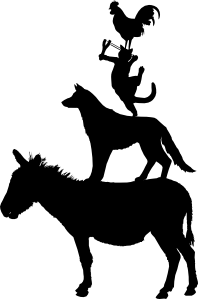
I used to do a lot of travel writing. When I lived in Tokyo, I had an assortment of semi-regular clients for whom I would write 'destination pieces' pertaining to Japan. While I don't get many of these at present (Edmonton isn't quite the blue-chip destination that Tokyo is), I do get the occasional one from old clients. This week I was approached by the editor of
SilverKris, Singapore Airlines' in-flight magazine, about an article on Toronto. I, of course, don't live in Toronto and actually haven't really spent that much time there, but given my prior relationship with the magazine, my passing familiarity with Canada's 'Centre of the Universe' and the fact that I have numerous friends and colleagues there, I took the job on.
While I am somewhat familiar with Toronto, having visited the city several times, there have been instances - and this is my dirty little secret as a writer - where I've written articles on places I've never actually been to. Is this dishonest? I don't really think so. After all, I've never misrepresented my own travel experience to get a gig and in cases like this I've been upfront that I a) haven't been to the location the editor wants the scoop on, and b) won't be able to unless they pay me a enough that I am able to take the time off work, go to said location, write about it and still make money on the whole deal. That hasn't happened yet. Perhaps I'm writing for the wrong people.
While there are no doubt editors out there who would choke on my commentary here (and I'm hoping I don't lose clients by writing this), my stance is that there is nothing wrong with writing travel pieces on destinations that you personally have never visited as long as you're honest about it and you
really do your research. Having said that, you do have to be careful, and there have certainly been cases in the past where I've decided that I was in no way qualified to write a particular destination piece and have turned the offer down. When it comes to making a decision on whether to take on an assignment I have my own personal guidelines. Here are my seven rules. I would be interested in hear what any other writers have to say on the subject.
 |
| Nope, haven't been here. |
1) Don't go too far out of your depth.
There's only been one case where I've written a destination piece on a
country I'd never visited. It was an article written for Air New Zealand for Tokyo Weekender where I was asked to profile the city of Auckland. I've never been to New Zealand and I was upfront about it, but for whatever reason they still wanted me to do it. But apart from this one case, I've only ever written about destinations I've never visited when I was already very familiar with the country and region in question and could draw at least somewhat on my own experience. You could probably write about Jasper National Park without going there if you've been to Banff or Waterton and have a grasp of Canada's Rocky Mountain Parks in general. Writing about Jammu and Kashmir without having been anywhere in northern India - that's a different story.
2) Talk to at least two different people who know it well.
This also applies to writing about a place you kind of know but haven't spent a great deal of time in. Get a second opinion. And especially if you've
never been there, get a second and a third opinion, lest you be stuck with a singular viewpoint that you can't actually back up. My advice would be to find two people of different backgrounds who know a place - perhaps one native-born resident and one ex-pat. Possibly both a male and female view of the place. Get creative. If you don't know anyone from somewhere, call a local travel bureau and find someone to talk to.
3) Do your homework.
It goes without saying that you need to do your research for any travel destination piece, even one that you know intimately. Ownerships change, restaurants go out of business, people change phone numbers, new train and bus services are added - you need to stay current. This applies all the more when you're writing about a place you don't know very well - or don't know at all. Get to know the history of the place. Get to know its character. Familiarize yourself with every facet of the place that you can - everything short of physically going there. And wherever possible, immerse yourself in photographs of the place, which will help you flesh your writing out with physical description of things.
4) Use quotes from famous locals, noted authors etc.
Don't have any personal anecdotes about a place? Use other people's. I once wrote an article about famous
ryokans (traditional inns) in Japan and wasn't able to get to all of them in person, but it proved to be not too difficult to dig into their histories and find out what famous people had visited them, and what certain poets of yesteryear had written about the surrounding region. Fill your writing with as much local colour as you can and say something like, "Don't take
my word for it; the poet Basho thought this place was the BOMB!"
5) Profile things that don't required first-hand, on-site knowledge.
 |
| Haven't been here either. |
Are there any big travel promotions on that pertain to the place you're writing about? Any new air connections, train services, tourist campaigns etc.? In the absence of a wealth of first-hand knowledge, go with information that your reader is going to want but that don't require in-depth knowledge. Remember that if your reader is engrossed in the article, they're likely actually interested in going to the place in question, which means they're going to want to know how to get there, how to get around, how can I economize while I'm there and are there any special events I need to check out. And for all of these, you can provide extensive information without having to go there yourself.
And if there aren't any special events or anything noteworthy going on, it's worth asking yourself if this particular destination is worth covering at all.
6) Check your facts after you're done.
Again, this really should go without saying. By this point, you should have established good working relations with your field sources. Run your draft by them and make sure what you're saying makes sense and actually applies. And again, if possible, get a second and possibly a third opinion.
7) If at all possible, do actually go there - even if only for a couple of hours.
To be fair, this is often impossible, but when I lived in Tokyo it was sometimes feasible to make a
very quick trip someplace, get off the train, have a quick look around, find two or three interesting and/or quirky things to write about, grab a handful of brochures and go straight back to the big smoke. There were times where I didn't even leave the vicinity of the main railway station and was still able to get a quick sense of the vibe of a place - before grabbing a few brochures, talking to a few people in the local tourist office and then leaving. That's not going to be possible everywhere (namely in Canada), but wherever possible you should find a way to actually go somewhere, even if it's for a split-second in travel terms. If nothing else, it'll make the assignment easier.
For your reading pleasure, here's the
article I wrote on Japan's historic ryokan back in the summer of 2008. Hint: of the six inns profiled in the article, I was only actually able to visit three of them. I would be curious to know if you can guess which ones they were.















